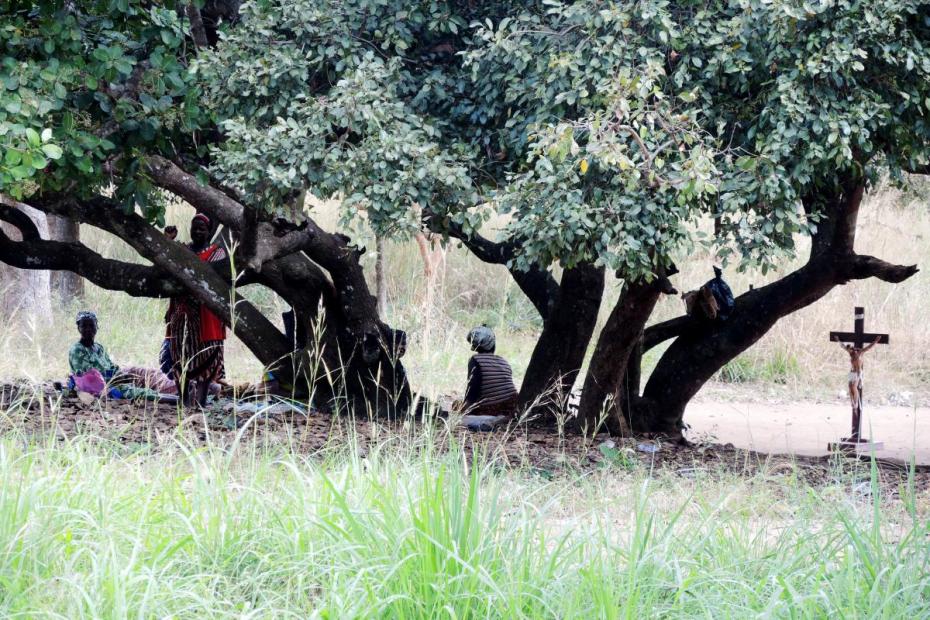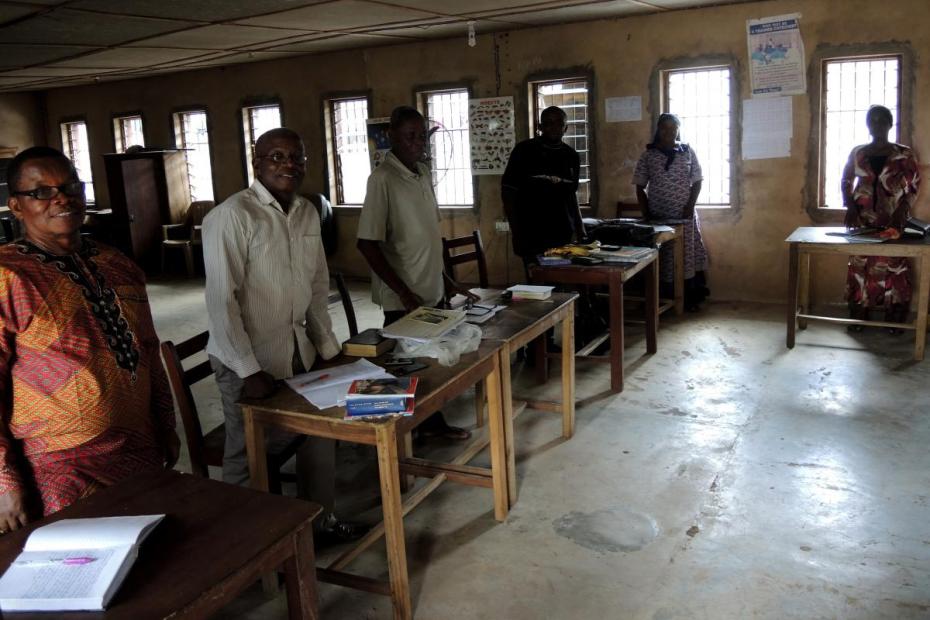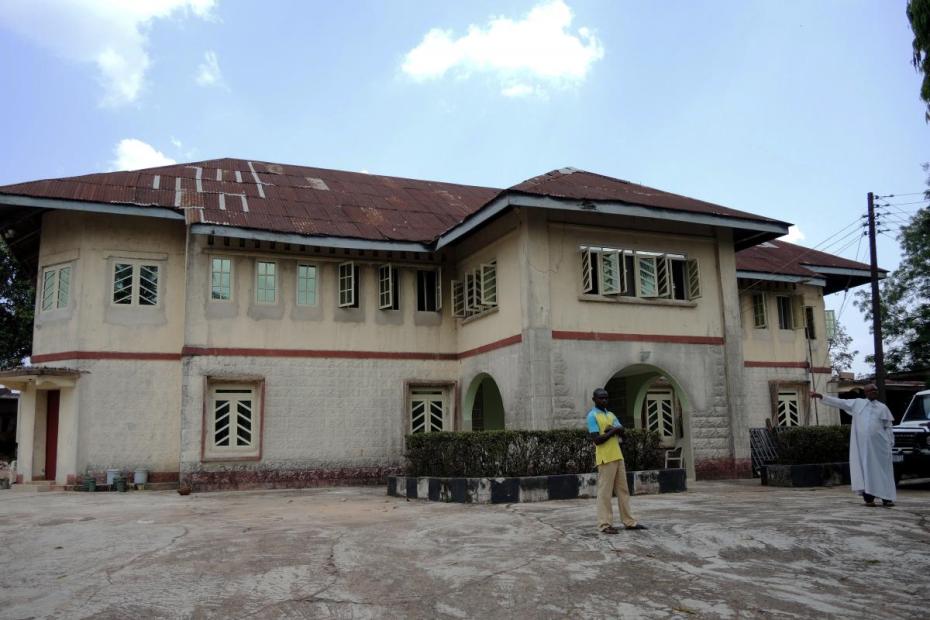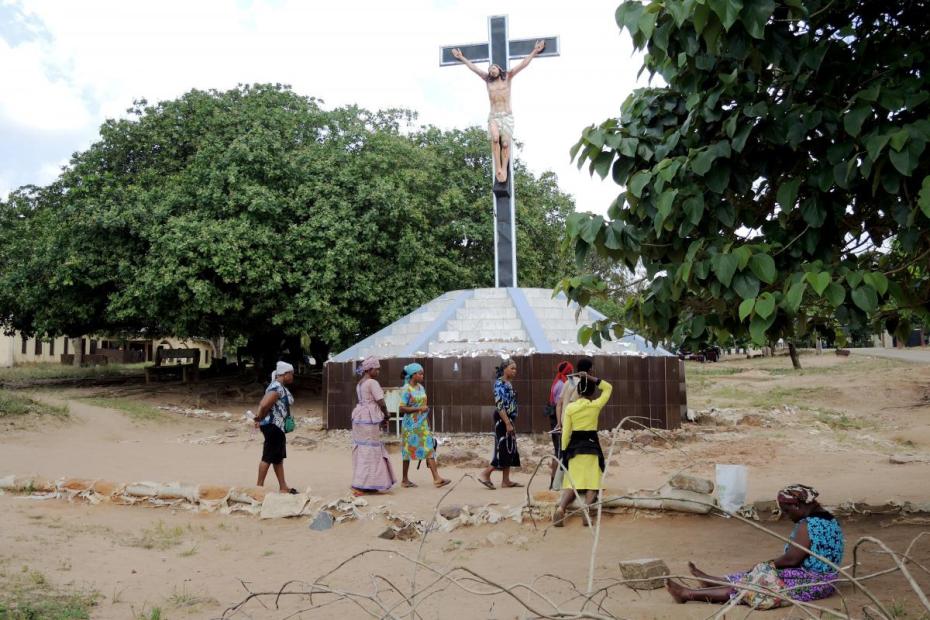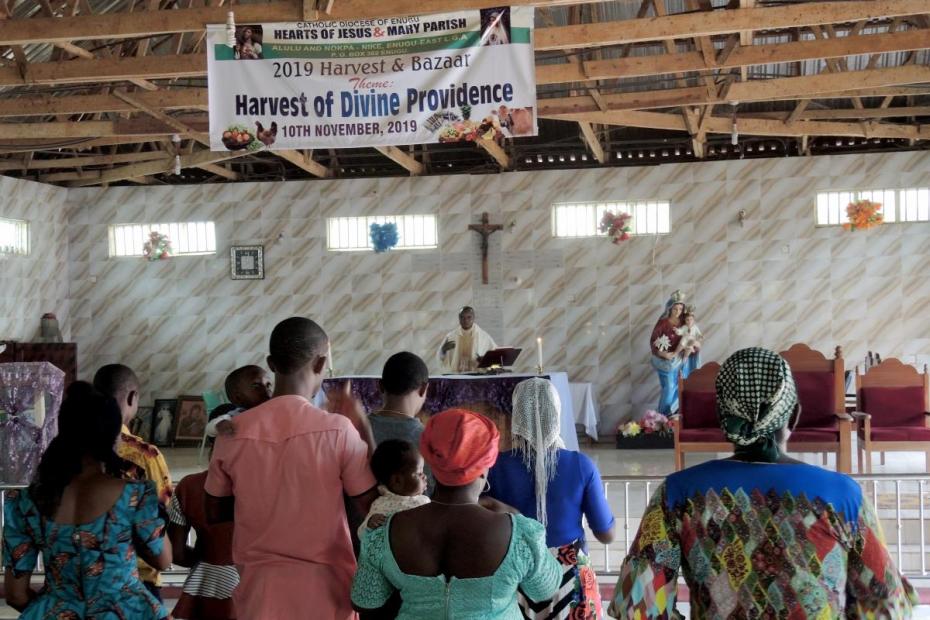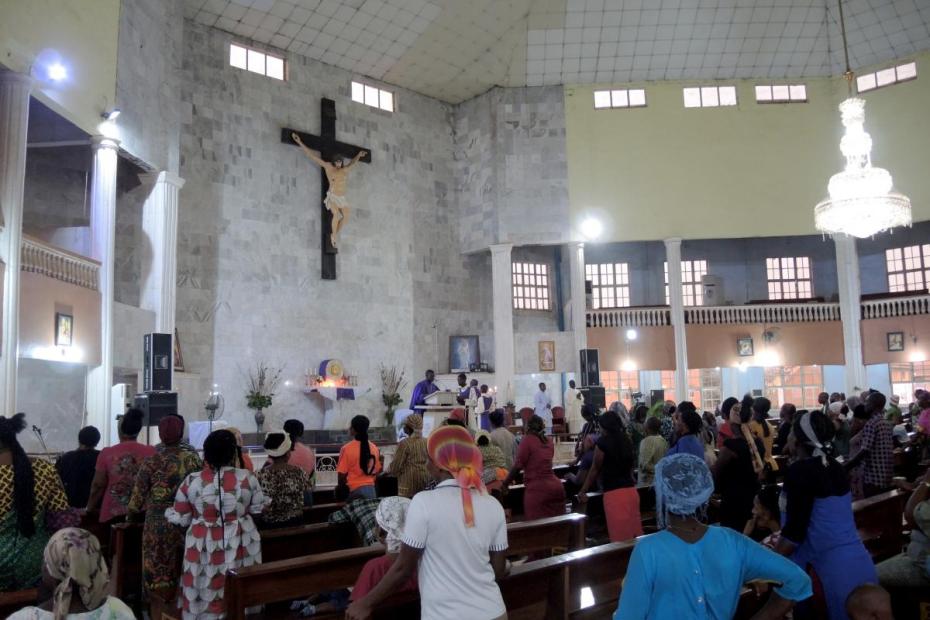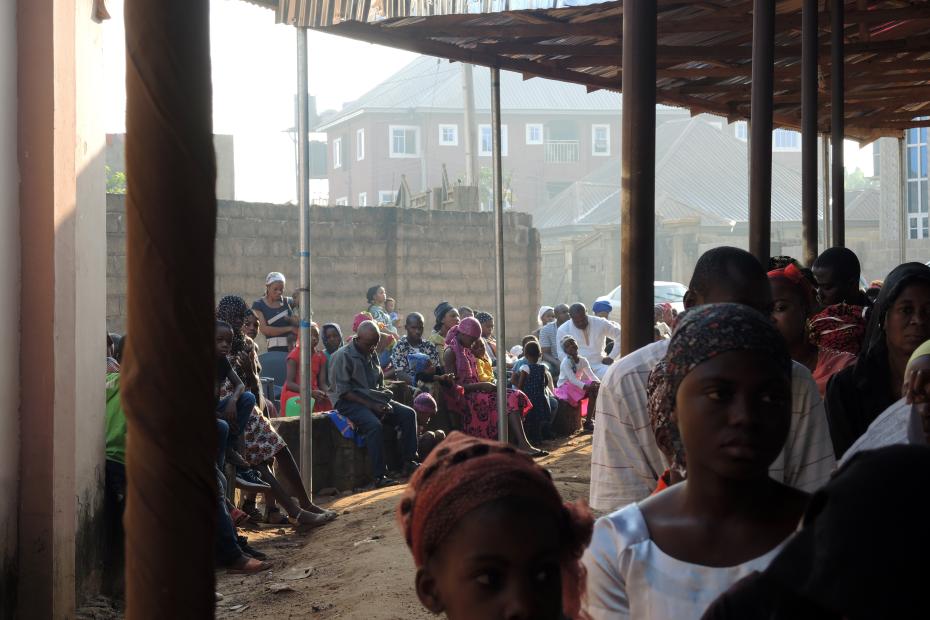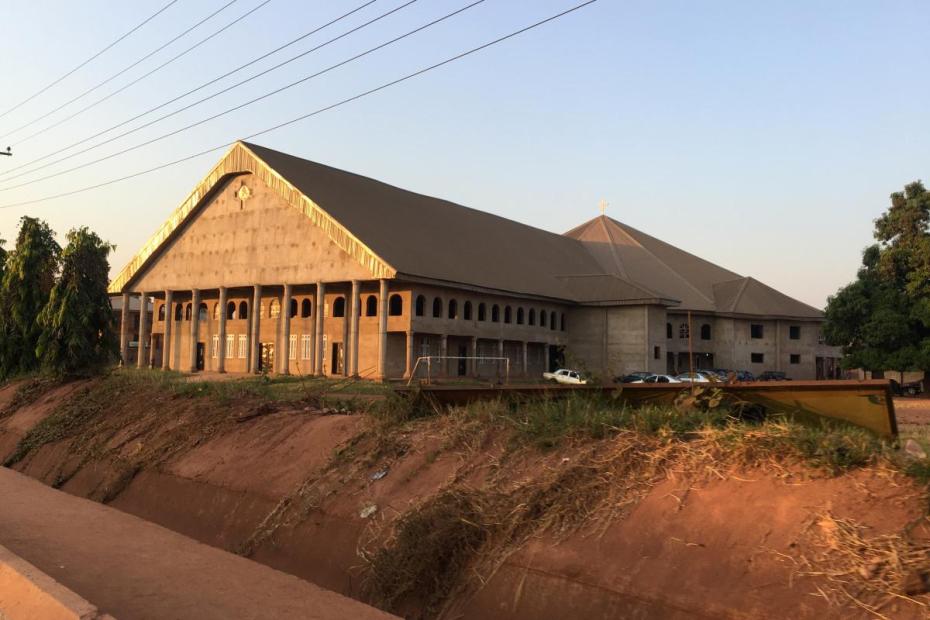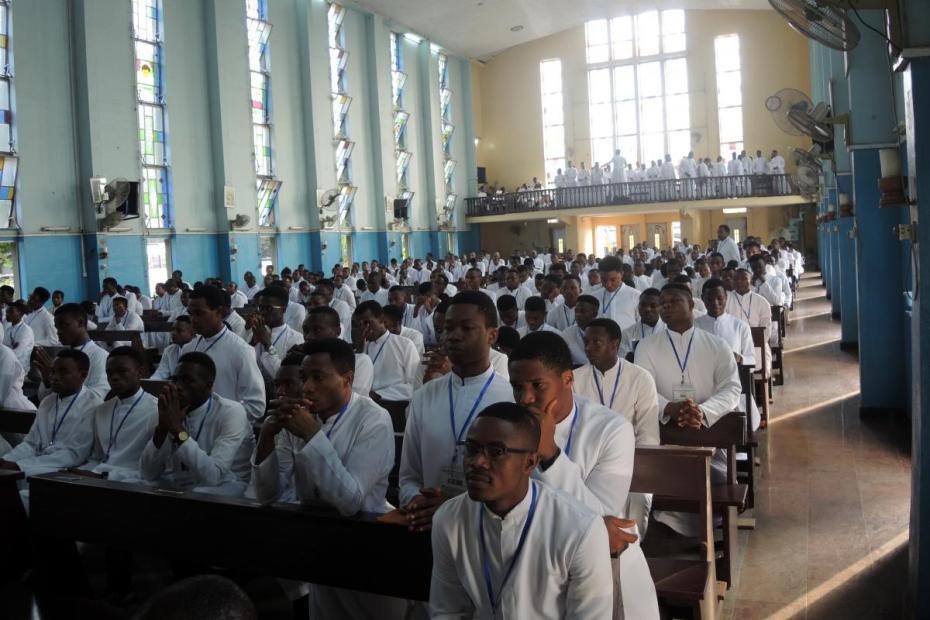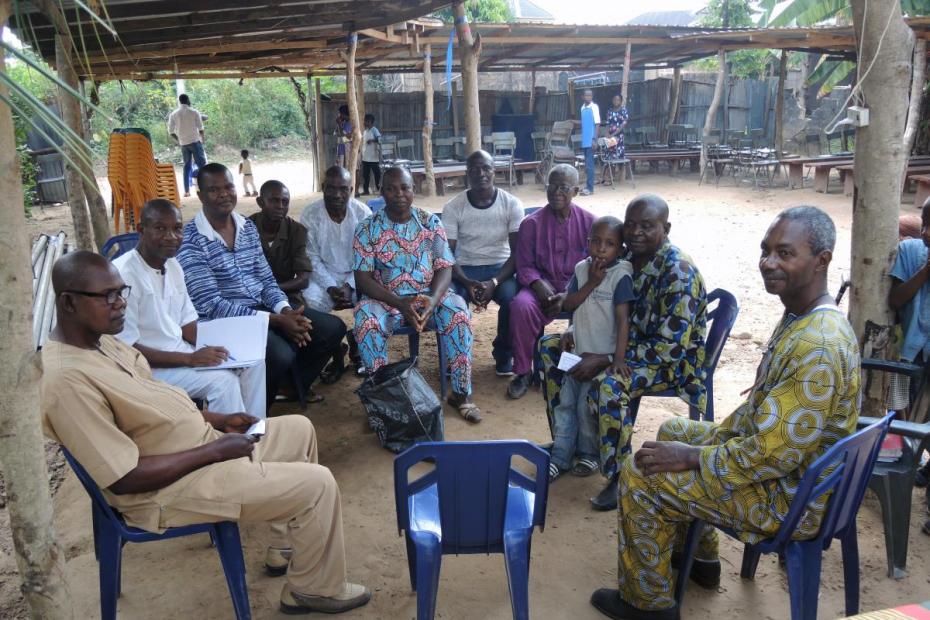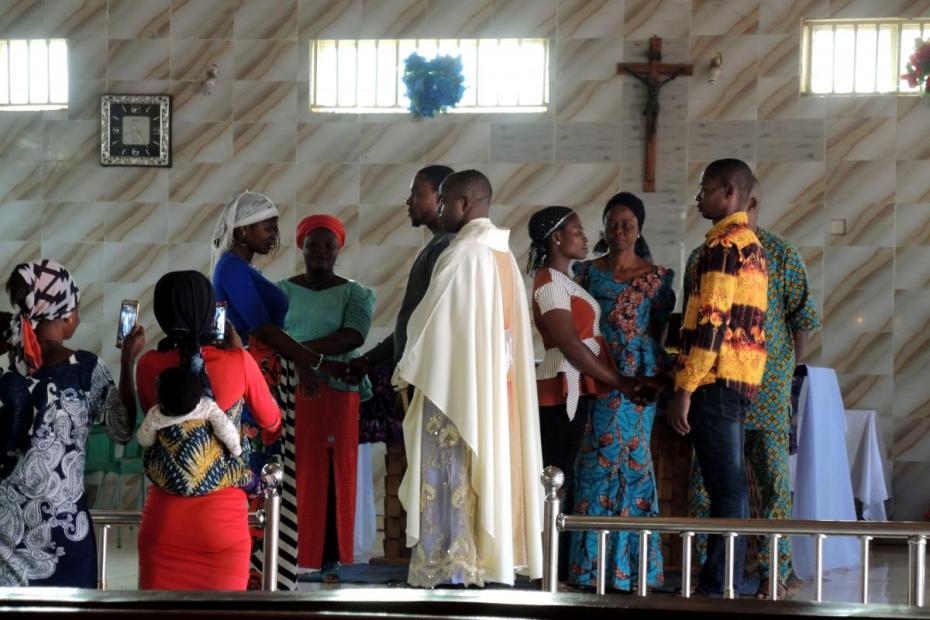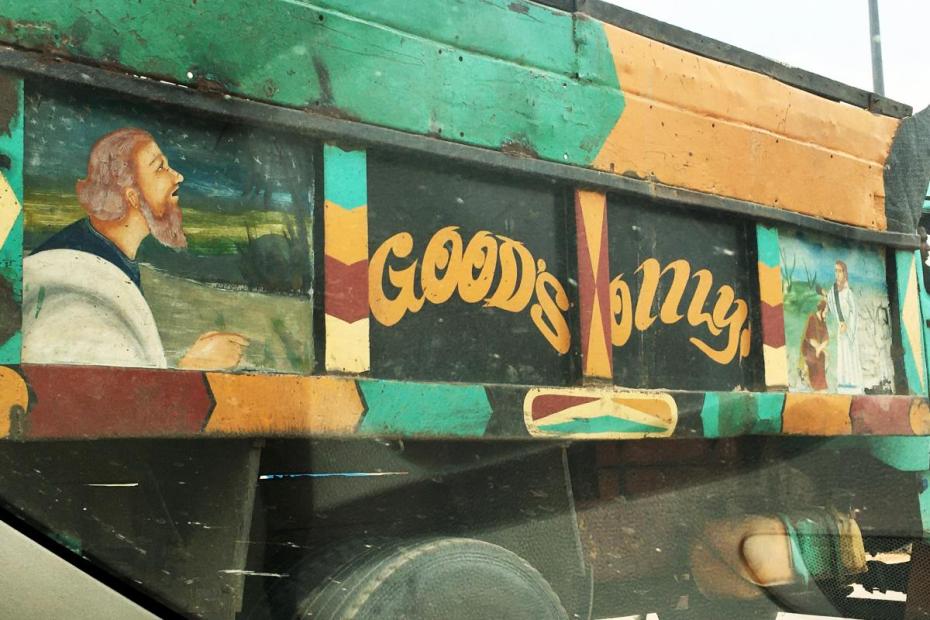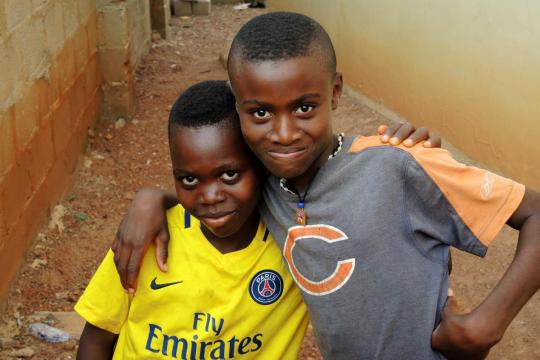Igbo people have inhabited a large swath of southeast Nigeria and parts of Cameroon for millennia. Premodern Igbo people likely saw themselves more as members of particular villages and lineages than as members of a broad, Igbo ethnicity. Cultural rules varied considerably from village to village, as did Igbo language, which is expressed in no fewer than twenty dialects. Religion was, by all accounts, absolutely integral to Igbo culture and politics, but there was a great deal of variation in religious beliefs and practices from place to place. Deities differed from village to village.
Broadly speaking, Igbo culture seems to have developed around the cultivation of yams, the primary staple food, which is still celebrated at traditional harvest festivals today. Some Igbo communities excelled at production of bronzes and cloth, and all were engaged in international trade networks long before the colonial era.1
Igbos’ sense of common identity as a single people is said to have grown particularly in the last century, in the face of colonialism, and grew even into a national identity when Igbo people tried to declare their independence from Nigeria in 1967. Despite their inability to achieve that independence, Igbo have continued to standardize the language and build a somewhat more shared pan-Igbo identity.
The first missions
Africans of Igbo ancestry from Sierra Leone were the first to preach the Gospel in Igboland in the mid-19th century, on behalf of the Anglican Church Missionary Society, which subsequently sent white missionaries.2 The first sustained Catholic mission, led by French Holy Ghost (Spiritan) priests, arrived in the area of Igboland east of the Niger in 1885.3 In Onitsha, on the Niger River, Obi (King) Eze Anozonwu gave them land for a church and school and granted permission to establish mission stations in nearby villages. Christianity made negligible inroads until the twentieth century, under newly consolidated British colonial rule after the British destroyed a famous traditional religious oracle.4 Much as Christian success relied on colonial expansion, historians still struggle to explain why it was so much more successful in Igboland than among other nearby Nigerian peoples who also lived under colonial rule. On the heels of the Anglicans, Irish Holy Ghost missionaries, who replaced their French confreres, established a mission center at a hilltop near the village of Eke and began to find great success in local villages. Their strategy depended a great deal on building up English-language schools and hospitals, and on invitations from village chiefs, even though the chiefs “stayed loyal to the religion of their ancestors.”5 The tiny number of Catholic mission clergy available meant that they relied on educating local converts to catechize and educate others. Shanahan wrote in 1909, “if we go from town to town talking only about God, we know from experience that much of our effort brings no result. But no one is opposed to schools.”6 Indeed, villages approached missionaries asking for schools more often than they could be immediately accommodated. A good deal of the geographic variation in Christian denominational strength in Igboland can be explained by invitations or lack thereof to missionaries from local leaders in the first half of the 20th century.
Igbo catechists
Historians agree that Catholic clergy were so “swallowed up” from the beginning by their focus on schools and hospitals that much of the work of catechizing was actually done by trained, lay Igbo catechists. Bishop Shanahan, who devised the strategy, described the Igbo catechists as “helpers” despite being fully aware of their critical role evangelizing their own people.7 “Local catechists were in charge of running day-to-day spiritual affairs,” Jacinta Nwaka reports, “such as instruction, baptisms, home visitations, conducting daily prayers, burying the dead, and settling cases between and among families.”8 The Holy Ghost missionaries were slow to develop an Igbo clergy, focusing instead on sending missionaries from Ireland. But as the number of Igbo Catholics continued to grow, the foreign missionaries were always stretched to keep up.
Enugu, where this research is based, began to grow rapidly after coal was discovered there in 1908/9.9 The first parish, which was previously a mission station, was established only in 1933. Less than 30 years later, Enugu was a diocese, with a Nigerian-born bishop.
Remarkable as the growth of the Church was in its first 50 years, the growth and strengthening of the Church in Igboland over the next 50 years was no less remarkable. Even in 1960, after a period of intense affiliation to Catholicism, Igbo scholars still assert that the Igbo worldview was still largely unchanged. “The victory of Christianity was only very partial and in some respects only superficial… The average Igbo of this period was not a Christian in the missionaries’ sense of the word. And he was not a follower of the traditional religion in the manner of his ancestors… religion to him meant some of the teachings of Christianity enriched by some traditional religious beliefs.”10 Kalu summarizes it this way: The period up until the civil war was a planting, and after was a maturation. “The emergence of Igbo [Catholic] priests was, therefore, a dangerous process for the gods because, as an Igbo proverb would put the matter, they understood what the woman was carrying in her basket which made her return from the farm at night.”11
Civil war
The immediate post-Vatican II years were a period of intense upheaval and warfare in Igboland. Nigeria achieved political independence in 1960, but the union was fragile. The peoples of south and southeast Nigeria, including the Igbo, declared independence in 1967, proclaiming the region south and east of Enugu as the republic of Biafra. Enugu was designated as Biafra’s capital. In a traumatic civil war that lasted until 1970, as many as two million civilians there died of starvation (a policy of blockade of food and medicine was imposed by the federated state of Nigeria as a weapon of war), and a generation of men was lost in battle before the Biafran leaders surrendered. The starvation resulting from the blockade during the Biafran war was known worldwide as a colossal humanitarian crisis.12 Though the peace which followed was surprisingly non-retributive, the devastation and impoverishment was considerable, and institutions and social life had to be rebuilt out of the ruin. The missionaries and international Catholic charities provided extensive relief during the blockade, and the victorious Nigerian government ensured that the war marked the end of the Irish missionary era there.13 The state also subsequently assumed control over the vast number of primary schools operated by Christian churches, necessitating the end of Shanahan’s mission strategy.14
Renewal
Remarkably, the years thereafter witnessed a huge growth in the Church and its seminaries, led by local leaders (Bigard Memorial Seminary in Enugu, one of many in Igboland, is the largest Catholic seminary in the world today), and fostered greater deliberate indigenization of Igbo Catholicism, even as it retains many distinctly Roman practices today. The post-Vatican II, postwar era also witnessed—and depended on—the blossoming of lay participation and organizations, even in a region with a large number of clergy today.15 One form of religious renewal, the Charismatic movement, actually derived from American influence, but found fertile soil in Nigeria, blossoming and taking root to a degree that it did not in America.16 Since the 1970s, religious life and priestly vocations and lay leadership all grew simultaneously in Igboland, unlike what happened in many other parts of the world.
- 1Elizabeth Allo Isichei, A History of the Igbo People (New York: St. Martin's, 1976). Some areas were more attuned to fishing, for example, which is reflected in their traditional religion and culture.
- 2Isichei, A History of the Igbo People, 160-61.
- 3Eddie E. Okafor, “Francophone Catholic Achievements in Igboland, 1883-1905,” History in Africa: A Journal of Method 32 (2005): 307–19. The Société des Missions Africaines (SMA) fathers, who had their mission headquarters in Lagos, led evangelization efforts in the smaller part of Igboland lying west of the Niger River. Given that this article focuses mostly on Enugu, which is in the lands to the east of the river, the attention in this historical account focuses on activities east of the Niger.
- 4The oracle shrine, the Ibini Ukpabi, was the most important and fearsome shrine in Igboland, a place used for settling disputes. The priests of the shrine often sold losing parties into slavery, particularly in the European trans-Atlantic slave trade, but also within Africa. Isichei reports, “In 1900, the Society of African Missions [who evangelized Igboland West of the Niger] had a nominal roll of 446 [baptized Catholics], and the Holy Ghost Fathers [who evangelized Igboland east of the river] of 1,322.” Isichei, A History of the Igbo People, 165.
- 5Jacinta Chiamaka Nwaka, “The Early Missionary Groups and the Contest for Igboland: A Reappraisal of Their Evangelization Strategies,” Missiology 40, no. 4 (2012): 409–23. The rivalry between the churches was intense, but Nwaka argues that it was the choice to educate in English, pushed especially by Bishop Shanahan (1905-1931) rather than in indigenous dialects as Anglicans advocated, that ironically gave Catholics the edge with Igbo people, who perceived English as a socio-economic opportunity in the colonial era. By 1932, there were 1,386 Catholic primary schools in Igboland as a whole (414). By 1964 that number grew to 2,206, and post-primary education had swelled as well (415). On the importance of invitations from chiefs, see C. N. Ubah, “Religious Change among the Igbo during the Colonial Period,” Journal of Religion in Africa 18 (1988): 79-81, and V. Nwosu, The Laity and the Growth of the Catholic Church in Nigeria: The Onitsha Story 1905-1983 (Onitsha: Africana—FEP Publishers 1990), 1-25.
- 6Shanahan, cited in F. K. Ekechi, “Colonialism and Christianity in West Africa: The Igbo Case, 1900-1915,” Journal of African History 12, no. 1 (March 1971): 113.
- 7Nwaka, “The Early Missionary Groups and the Contest for Igboland,” 416-7. Nwaka, who is Nigerian, laments this as a missiological shortcoming, and regrets inadequate training of catechists, but her example also points to the crucial role they played. Also see Ogbu U. Kalu, The Embattled Gods: Christianization of Igboland, 1841-1991 (Trenton & Asmara: Africa World Press, 2003) 197-98, and Nwosu, The Laity and the Growth of the Catholic Church in Nigeria, 26-56.
- 8Nwaka, “The Early Missionary Groups and the Contest for Igboland,” 417.
- 9Kalu, The Embattled Gods, 113-128.
- 10Ubah, “Religious Change among the Igbo during the Colonial Period,” 88.
- 11Kalu, The Embattled Gods, 199. Nwaka similarly writes, “the Igbo did not internalize considerably the message and values of Christ before 1970 when virtually all missionaries left.” Jacinta C. Nwaka, “Beyond the Service of Schools: The Catholic Church and the Use of Creative Art in the Evangelization of the Lower Niger,” Journal of the Historical Society of Nigeria 20 ( 2011): 77. In “Religious Change among the Igbo during the Colonial Period,” Ubah, 82, insists, on the contrary, that religious instruction was deeply interwoven into the curriculum.
- 12See, e.g., J.C. Nwaka, “Reactions of the Governments of Nigeria and Biafra to the Role of the Catholic Church in the Nigeria-Biafra War,” War and Society 34, no. 1 (2019): 65–83.
- 13Enda Staunton, “The Forgotten War: The Catholic Church and Biafra (1967-1970),” History Ireland 8, no. 3 (2000): 44–48. In the years leading up to the war, she says, “over 500 of the country’s 800 priests were Irish” (44). Nwaka, “Beyond the Service of Schools,” 76, describes how many clergy were expelled by the Nigerian government because of this support.
- 14Nwosu, The Laity and the Growth of the Catholic Church in Nigeria, 117.
- 15Jacinta Chiamaka Nwaka, “The Catholic Church, the Nigerian civil war, and the beginning of organized lay apostolate groups among the Igbos of southeastern Nigeria,” The Catholic Historical Review 99, no. 1 (January 2013): 78-95, and Nwosu, The Laity and the Growth of the Catholic Church in Nigeria.
- 16The Gambian scholar Lamin Sanneh writes: "Although it would be natural to assume that the charismatic link in African Catholicism was introduced at the hands of local people, in fact it came by way of an expatriate American and Dominican priest, named Richard Farmer" in 1973, and later by a team led by Fr. Francis MacNutt. "MacNutt's message," he says "had deep resonance for Africans." Lamin Sanneh, Disciples of All Nations: Pillars of World Christianity (Oxford and New York: Oxford University Press, 2008) 192-3.
